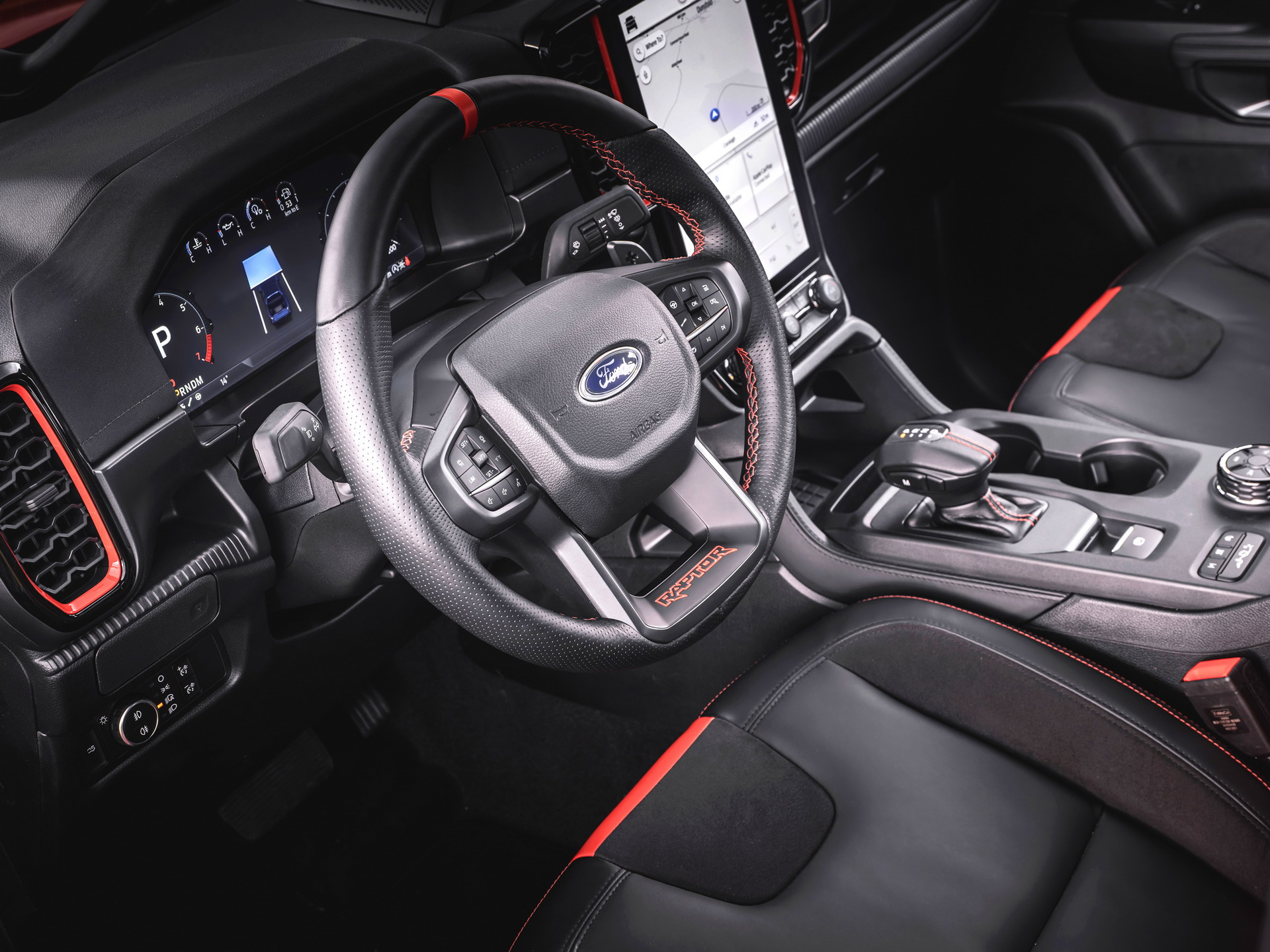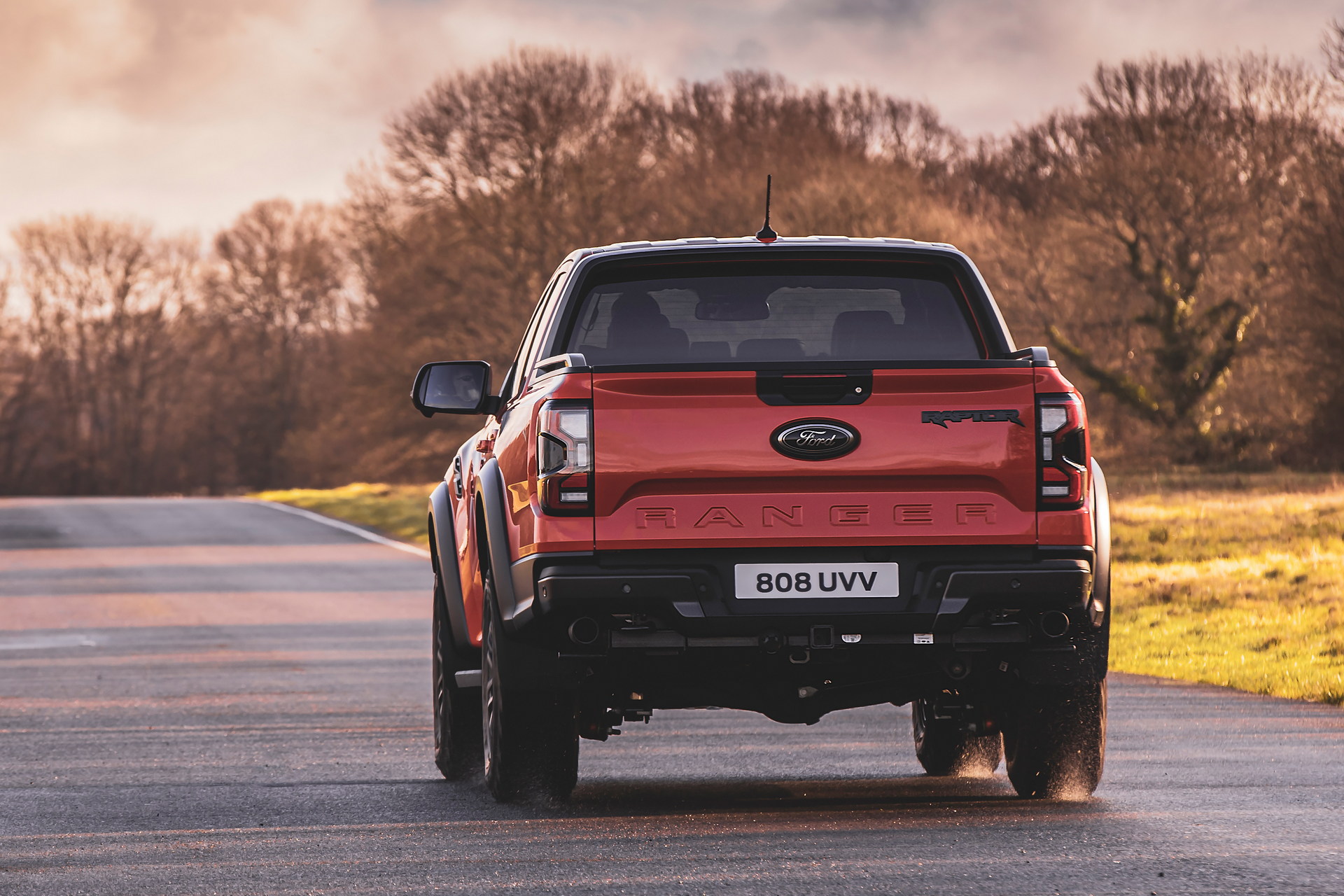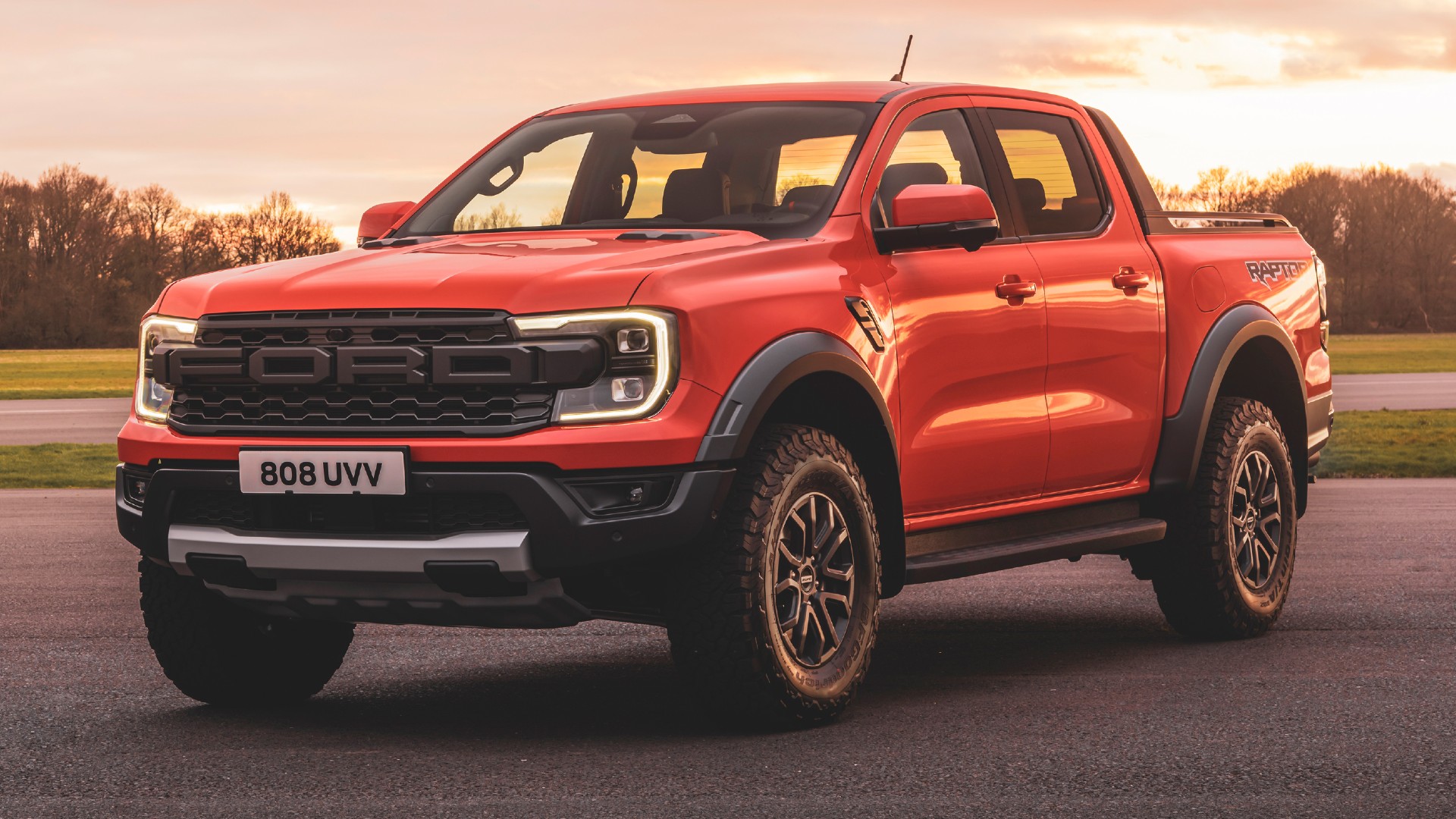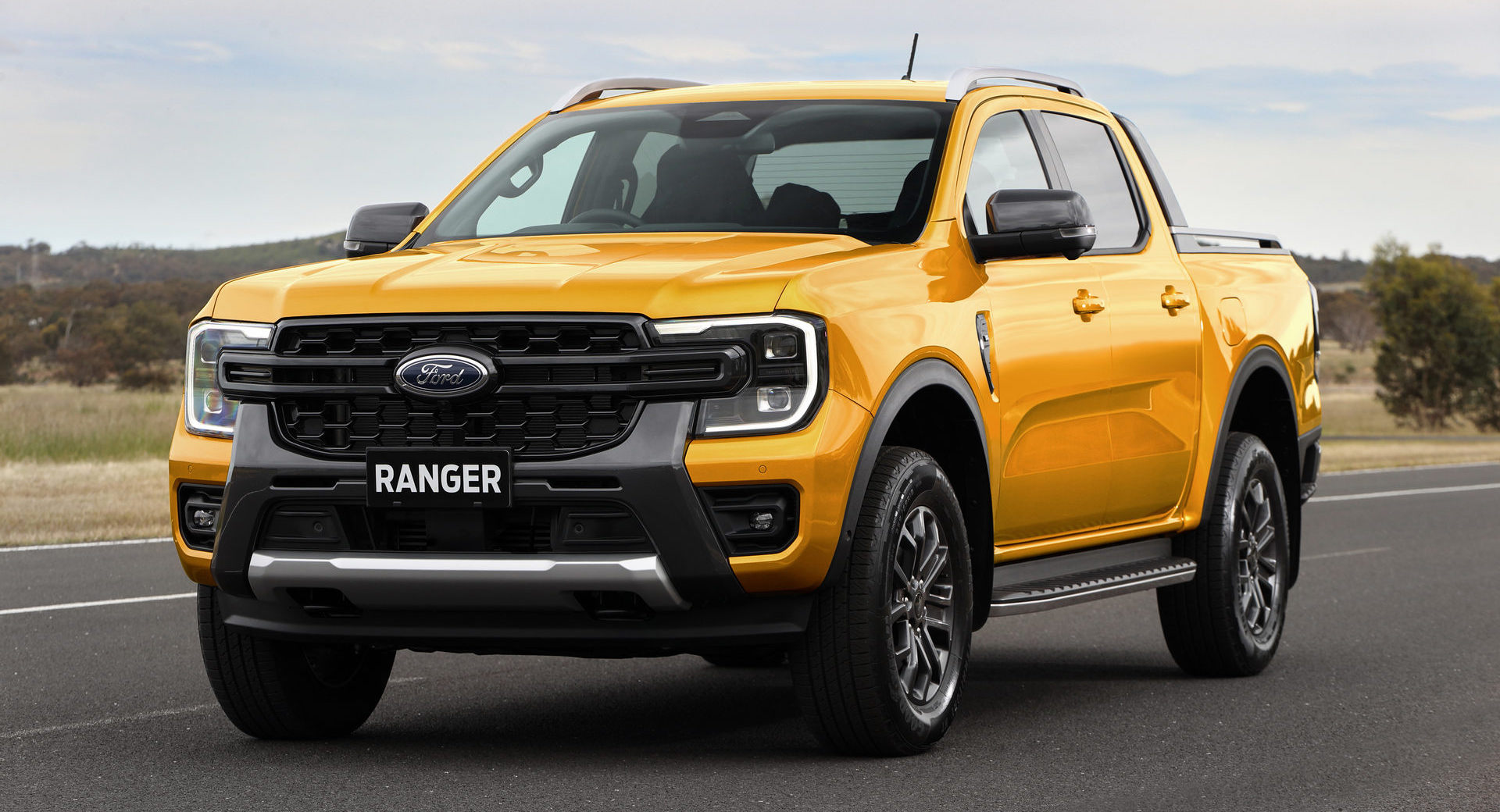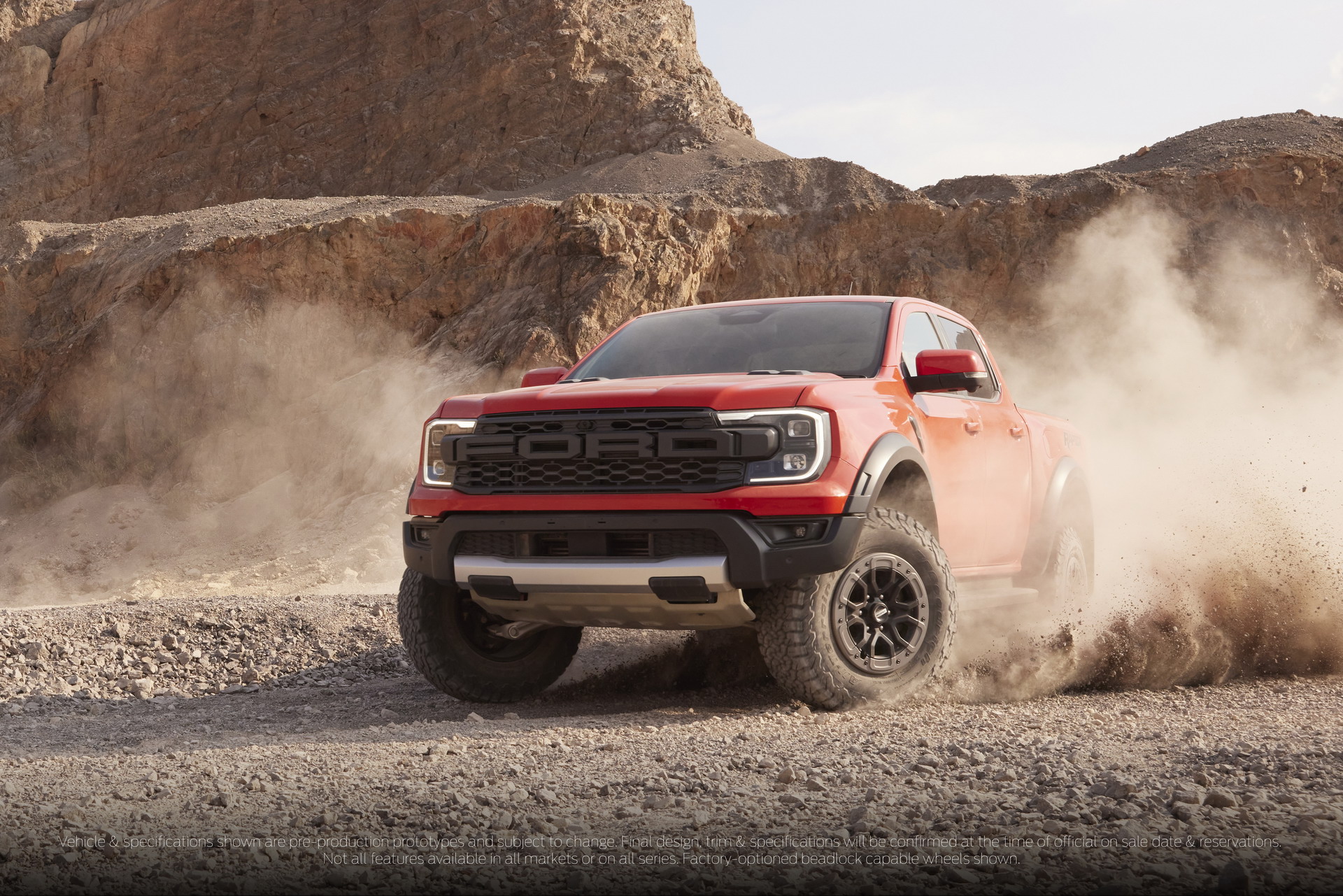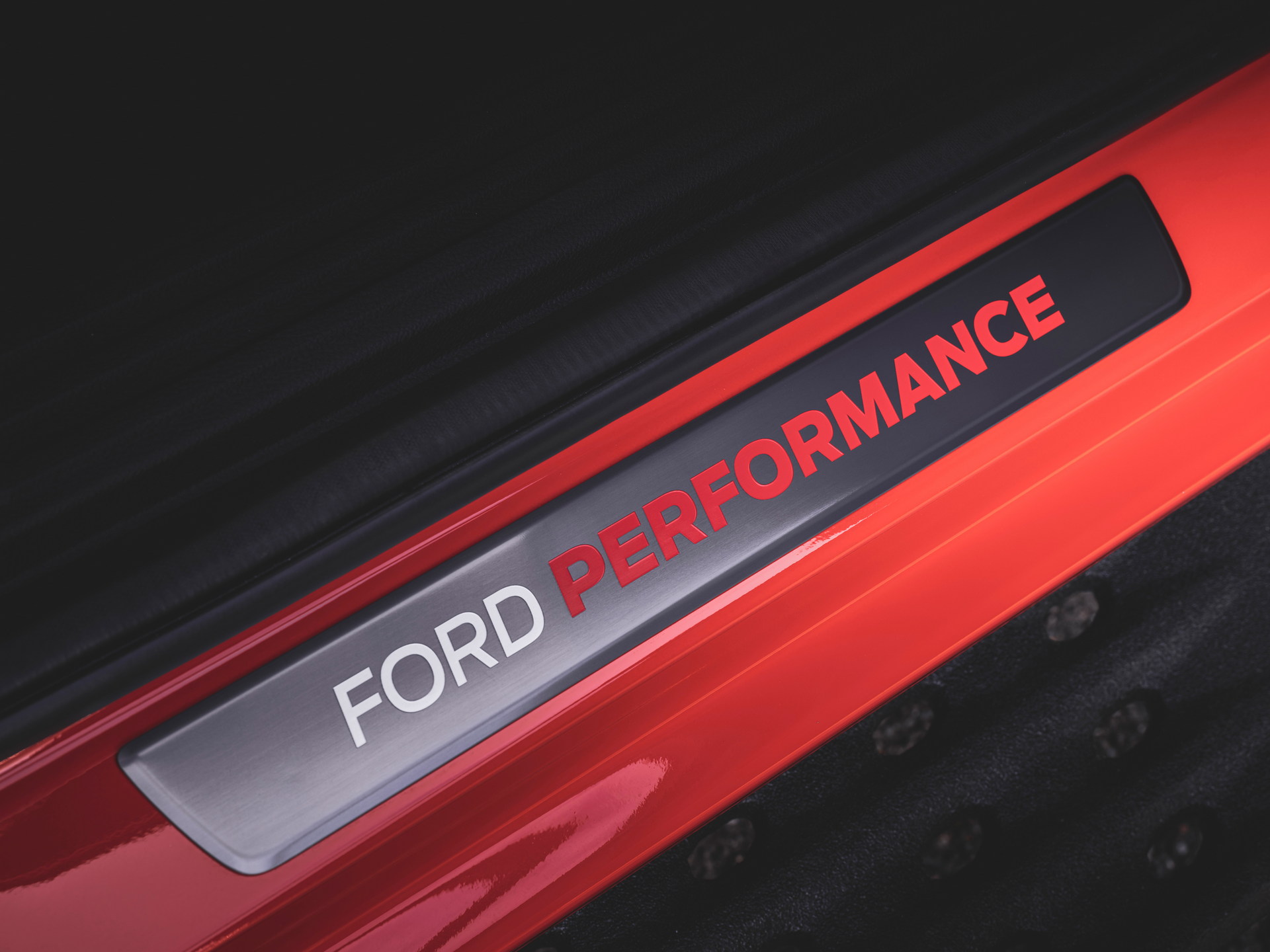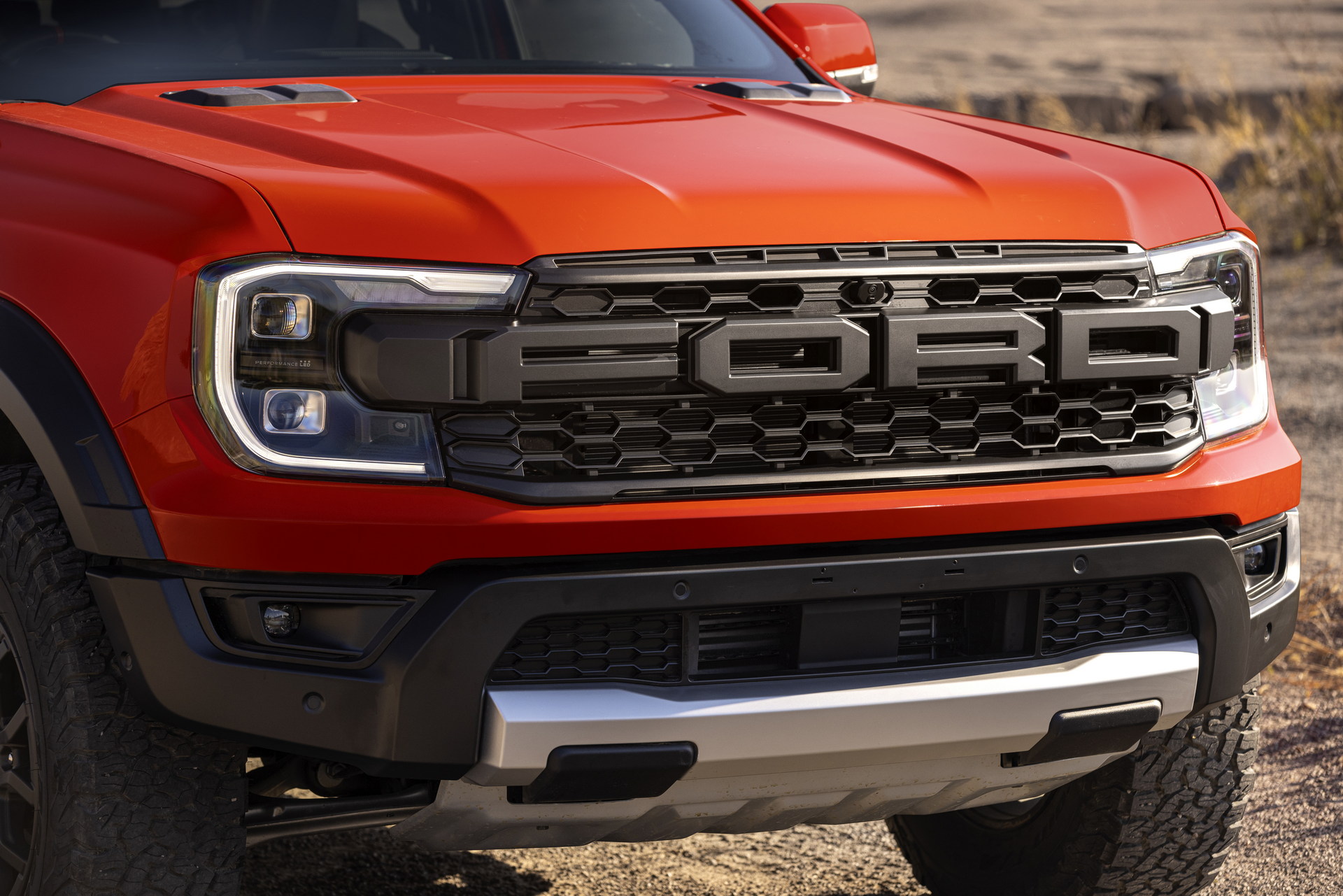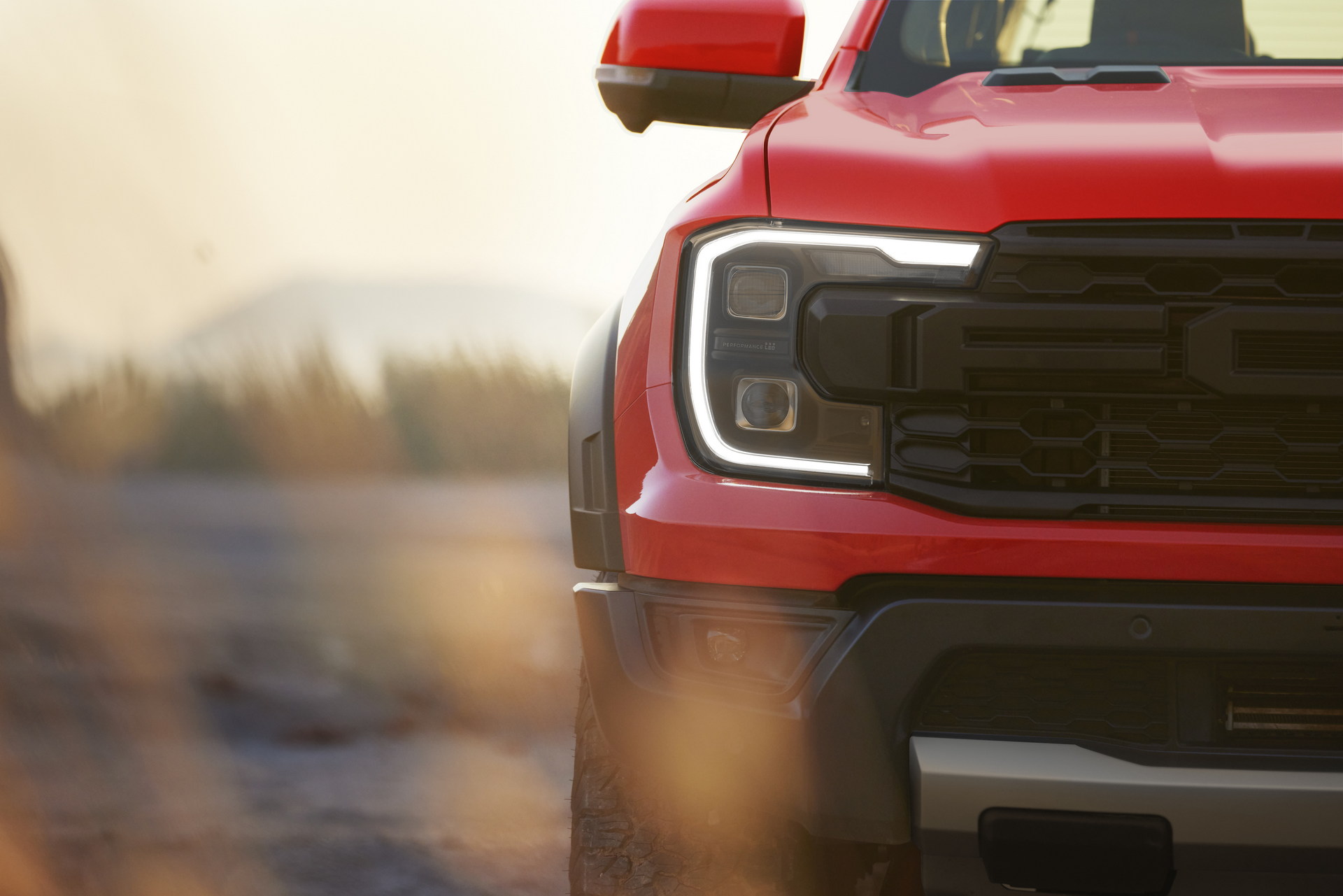Ford has just unveiled the new generation of the Ranger Raptor developed by Ford Performance as the flagship version of its mid-size pickup offering the ultimate mixture of performance and off-road capability.
The new Ranger makes the third addition to the current Raptor family next to the larger F-150 Raptor and the Bronco Raptor. Today, we get a look at the European and Australian specification models, but a North American version has been confirmed as part of the 2023 Ranger family that will be introduced next year.
Tougher Raptor Looks
Starting with the design, most will see the Raptor either as a beefed-up Ranger coming right out of the gym or a more sophisticated interpretation of its larger brother, the F-150 Raptor. The flared wheel arches front and rear cover wider tracks and new 17-inch wheels shod in massive 32-inch all-terrain tires while the ground clearance has been increased.
See Also: Ford Bronco Raptor Extreme Off-Roader Bows With Over 400 Hp For $68,500
It also get bespoke bumpers with skid plates, aluminum side steps, a signature grille with Ford lettering, bonnet scoops, and Raptor stickers. Underbody protection has been enhanced with a larger front bash plate made of 2.3-inch thick high-strength steel, plus extra shields for the engine and transfer case. Finally, twin-rated tow hooks on both ends will help with recovery in the unlikely event of getting stuck.
Inside, Ford added a pair of sports seats inspired by jet fighters that offer greater support. Other unique touches include red stitching, heated premium leather steering wheel with magnesium paddles, and ambient lighting. You’ll also find standard equipment features such as matrix LED headlights, a 12.4-inch digital instrument cluster, a huge 12-inch central touchscreen with Ford’s SYNC4 infotainment, and a 10-speaker B&O sound system.
New 3.0-liter EcoBoost V6 With 284-HP In Europe, 394-HP In Australia
While the Raptor will still be available with its predecessor’s bi-turbo 2.0-liter four-cylinder diesel in select markets, including Europe from next year, the highlight of the second generation is the new twin-turbo 3.0-liter EcoBoost V6 petrol engine offering significantly improved performance.
In European specification, the V6 produces – a rather modest for its displacement – 284 hp (212 kW / 288 PS) and 491 Nm (362 lb-ft) of torque, but is tuned to produce as much as 392 hp (292 kW / 397 PS) and 583 Nm (430 ft-lb) of torque in Australia.
We asked Ford about the significant difference in power output between Europe and Australia and they told us it has to do with emission-related market-specific tuning. “Like other OEMs, we homologate to meet the stringent EU emissions standards”, a Ford spokesperson told Carscoops. “The new Ranger Raptor with its V6 EcoBoost petrol engine is around 30% more performance than the current diesel.”
Speaking of performance, the company didn’t provide specific numbers but Dave Burn, chief program engineer promised that the new engine brings “a different dynamic to the Ranger Raptor that will satisfy even the more hardcore performance enthusiast”. Justin Cappichiano, Raptor’s program supervisor, revealed that the new Raptor was a full minute faster than its predecessor in their 10-km (6.2 miles) long test track in Australia, describing it as “hot hatch fast”.
Off-Road Focused Modifications
As in the previous Ranger Raptor, power is transmitted to all four wheels through a 10-speed automatic transmission. The permanent four-wheel-drive system has a two-speed transfer case, front and rear electronic diff-locks, and the option of switching to rear-wheel-drive. The driver can choose between seven drive modes – Normal, Sport, Slippery, Rock Crawl, Mud/Ruts, Sand, and Baja (ideal for high-speed off-road stunts), altering many different parameters.
Additionally, the Raptor comes with an active-valve twin-pipe exhaust system that can be set to Quiet (for early morning startups), Normal (daily use), Sport (louder), and Baja (straight-through style intended for off-road use only). Finally, the Trail Control system that debuted in the previous-gen F-150 Raptor is the equivalent of adaptive cruise control for off-roading. The driver sets a speed below 20 mph (32 km/h) and lets the vehicle manage acceleration and braking while he/she concentrates on steering.
Ford engineers reinforced the chassis of the Ranger making it stronger and more durable for the Raptor. The heavy-duty suspension comprises new upper and lower control arms made of aluminum, a new set of Ford Performance-tuned active FOX 2.5-inch Live Valve shock absorbers offering 50% reduced friction compared to the previous model, and a refined Watt’s link geometry for the rear. Suspension travel has been increased to 290 mm (11.4 inches) at the front and 250 mm (9.8 inches) at the rear.
When will it go on sale?
The second-generation Ford Ranger Raptor will reach European dealerships in late summer 2022. This means it will be the first variant of the new Ranger that will be available in Europe, with the lesser Wildtrak following in spring 2023. The diesel variant of the Ranger Raptor will arrive in 2023, but it will be available only in select markets. Ford didn’t reveal pricing, but it is safe to assume that the new Raptor V6 will likely be more expensive than its diesel-only predecessor.
As for the North American model, Ford CEO Jim Farley revealed on Twitter that the Raptor will be introduced alongside the new Ranger in 2023.






